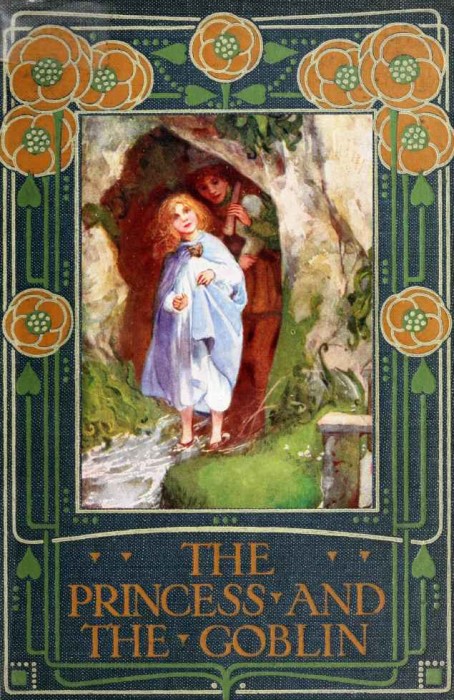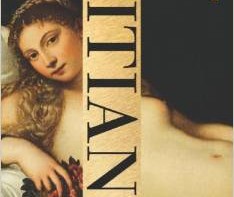[EDITOR’S NOTE: As our ‘Christian Doctrine and the Arts’ series continues, Maria Benjamin explores a theology of childhood amidst the backdrop of George MacDonald’s The Princess and the Goblin. For more information on this series, see the series introduction.]
Truly I tell you, anyone who will not receive the kingdom of God like a little child will never enter it.
Mark 10:15 (NIV)
In Mark 10:15, Jesus implies that childhood, or the quality of childlikeness, is necessary for those seeking to enter the kingdom of God. The precise nature of this ‘childhood’ has intrigued different thinkers attempting to define a Christian theology of the child.[1] Karl Rahner, for instance, claims that childhood is both the beginning and the end of a truly mature Christian experience. He writes, ‘In the child a man begins who must undergo the wonderful adventure of remaining a child forever, becoming a child to an ever-increasing extent, making his childhood of God real and effective in this childhood of his, for this is the task of his maturity.’[2]
 The task of increasing childlikeness in maturity appears to be a contradiction in terms, until one understands Rahner’s particular conception of childhood. For Rahner, childlikeness or childhood is qualified by attributes such as ‘openness,’ ‘trustful submission to control by another,’ ‘the courage to allow fresh horizons… to be opened up before one,’ and ‘a readiness to journey into the untried and the untested.’[3] Rather than literal youth, Rahner argues that it is the childlike spirit of adventure, courage, and trust that is preserved in the mature Christian adult.
The task of increasing childlikeness in maturity appears to be a contradiction in terms, until one understands Rahner’s particular conception of childhood. For Rahner, childlikeness or childhood is qualified by attributes such as ‘openness,’ ‘trustful submission to control by another,’ ‘the courage to allow fresh horizons… to be opened up before one,’ and ‘a readiness to journey into the untried and the untested.’[3] Rather than literal youth, Rahner argues that it is the childlike spirit of adventure, courage, and trust that is preserved in the mature Christian adult.
These aspects of Rahner’s theology of childhood find artistic embodiment in many works of children’s literature.[4] Children’s literature is sometimes dismissed as an inferior form of adult literature, and, like other popular genres, its inclusion in the academic canon has been disputed.[5] However, the study of children’s literature can yield rich theological insights for the church and the academy. The genre foregrounds the importance of the child, as well as transformational journeys of growth and maturation. The themes of childlike receptivity, growth, and transformation also have natural ties to the doctrine and work of the Holy Spirit. Pneumatological suggestions in children’s stories can further reinforce a positive theology of childhood.
The intersection of children’s literature, pneumatology, and a theology of childhood may be observed in George MacDonald’s fantasy novel, The Princess and the Goblin (1872). MacDonald, a hugely influential writer in the history of Anglo-American children’s fiction, was himself a strong advocate for a theology of childhood. He famously declared, ‘For my part, I do not write for children, but for the childlike, whether of five, or fifty, or seventy-five.’[6] In his Unspoken Sermons, he claims ‘God is childlike,’[7] and that this recognition of ‘childhood as divine’[8] opens one to receive ‘God in the child.’[9] The paradox of the ‘old child,’ which Rahner discusses decades later, also appears in The Princess and Curdie (1883). Through his narrator, MacDonald observes, ‘The boy should enclose and keep, as his life, the old child at the heart of him, and never let it go… The child is not meant to die, but to be forever fresh born.’[10] Like Rahner, MacDonald affirms the dignity of the child and the enduring need for childlikeness.
Children’s literature is sometimes dismissed as an inferior form of adult literature, and, like other popular genres, its inclusion in the academic canon has been disputed.
In The Princess and the Goblin, MacDonald’s theology of childhood is enriched by pneumatological echoes or suggestions that cluster around the character of Queen Irene. There are four significant images that evoke the work of Holy Spirit and encourage a theology of childhood: the lamp, the thread, the bath, and the rose-fire. Each suggests, respectively, the pneumatological works of illumination, guidance, baptism, and sanctification.[11]

The first image, the lamp, suggests divine illumination—the work of the Spirit in enlightening the minds of Christian believers.[12] This enlightenment, sometimes described as an ‘unveiling’ of the heart, enables believers to perceive the revelation of God, and receive divine reality as truth.[13] Without the illumination of the Holy Spirit, spiritual realities cannot be discerned and seem foolish to human minds.[14] The light of the Spirit guides children of God out of darkness into the ways of light and truth.[15] In MacDonald’s novel, the silvery light of Queen Irene’s lamp serves a similar purpose, leading the Princess to her grandmother. The luminous globe usually hangs in the Queen’s bedroom, but sometimes appears as a silver ‘moon’[16] that helps Irene navigate dark mountain paths and the mysterious stairway to the tower. Queen Irene explains that only a few people are able to see the lamp; furthermore, it is the lamp-light that allows the Princess to see the splendours of the tower-room. Without the illumination of the lamp, the Queen’s lofty home would only look like a ‘bare garret’ with ‘a heap of old straw.’[17]
This is precisely how it appears to the sceptical Curdie, who does not receive the degree of illumination granted to the Princess until The Princess and Curdie. Like the Holy Spirit, Queen Irene must enlighten the human imagination, before it can perceive and believe in the supernatural realities of the novel. Curdie and Lootie do not see or believe in the Queen, because she does not reveal herself to them. MacDonald seems to suggest that the childlike qualities of openness and trust are also key in receiving these divine intimations. This quality in adult characters like Curdie’s parents and the king explains their ability to accept the existence of the great Queen, which is scoffed at by Curdie and Lootie. In MacDonald’s novel, as in Rahner’s theology of childhood, childlikeness (rather than age) is the mark of maturity.
 A second pneumatological aspect that appears in the novel is divine guidance. In John 14:18, Jesus promises his disciples that He will not leave them ‘as orphans’; He will send them his Spirit, who will ‘guide’ them ‘into all truth.’[18] Guidance, counsel, and comfort are considered special works of the Spirit.[19] In The Princess and the Goblin, Queen Irene performs the pneumatological role of supernatural, wise guide. She offers counsel and comfort to the motherless Princess Irene, who is left in the care of servants while her father travels the country, fulfilling his kingly duties. The Queen also gives her granddaughter a fiery ring tied to a ‘shimmering ball’ of fine thread.[20] She tells the Princess that when she is in danger, she should ‘follow the thread wherever it leads,’[21] trusting that she will find her grandmother and comfort at the other end.
A second pneumatological aspect that appears in the novel is divine guidance. In John 14:18, Jesus promises his disciples that He will not leave them ‘as orphans’; He will send them his Spirit, who will ‘guide’ them ‘into all truth.’[18] Guidance, counsel, and comfort are considered special works of the Spirit.[19] In The Princess and the Goblin, Queen Irene performs the pneumatological role of supernatural, wise guide. She offers counsel and comfort to the motherless Princess Irene, who is left in the care of servants while her father travels the country, fulfilling his kingly duties. The Queen also gives her granddaughter a fiery ring tied to a ‘shimmering ball’ of fine thread.[20] She tells the Princess that when she is in danger, she should ‘follow the thread wherever it leads,’[21] trusting that she will find her grandmother and comfort at the other end.
The enchanted thread evokes the guidance of the Spirit in several ways. Following the gossamer-like strand is a test of faith because it cannot be seen, but only felt. This is suggestive of the Spirit, whose presence can be palpable without being visible. In the novel, Irene must put her finger on the thread and feel her way along it, even though it leads her on unpredictable, ‘roundabout’ paths.[22] She is told to obey the guidance of the thread without doubting it. Irene’s faith is specially tested when the thread unexpectedly leads her towards danger—the dark, goblin-infested mines under the mountain. The Princess follows the strand, unaware that she is being sent to free Curdie, who was navigating the mines with an ordinary ball of string when he was captured by the goblins. Passing the test, the Princess successfully rescues Curdie with the superior guidance of the supernatural thread and faith. She confidently follows the thread back to her grandmother’s tower to find commendation and comfort.
This secret journey of descent and ascent, trusting to imaginative faith rather than perception and reason, leads to a new stage of maturity for the child. Irene begins to assume her role as Princess, and commands new respect in her household. The Queen’s testing of Irene’s faith resonates with the theology of trials found in James’s epistle. James writes that perseverance through divine tests of faith will lead to greater maturity and completeness.[23] By guiding children of God through these tests, the Holy Spirit is able to strengthen belief and trust in God. These ideas also appear in Rahner’s theology of childhood, where the ‘trustful submission to the control of another,’ coupled with the childlike courage and willingness to journey to ‘untried and untested’ places, are part of the process of maturation.[24]
A third pneumatological suggestion that may be seen in the novel is the baptismal image of the ‘large silver bath’ in the tower-room. After her long descent to the mines to retrieve Curdie, the Princess is bedraggled, bruised, and unrecognisable. Queen Irene undresses her and lowers her into the infinite depths of the bath. The ‘clear cool water’ closes over her, and she seems to lie in ‘the strange lovely blue’ space for a long time, until her grandmother lifts her out.[25] Standing up, the Princess feels ‘as if she had been made over again. Every bruise and all weariness were gone, and her hands were soft and whole as ever.’[26] The language has pneumatological overtones, suggesting cleansing from sin, regeneration, and the quickening of new life in the believer.[27] This baptismal descent and ascent, and its associations with death and resurrection, are echoes of the Princess’s descent into the hell-like depths of the mines, and her ascent into the heaven-like spaces of the tower.[28]

The baptismal event is a defining moment in the Princess’s path to maturity, sealing the profession of faith that she made with the trial of the thread. It is also an act requiring trust and surrender, for Irene sees no bottom to the tub, but only a starry ‘blue gulf’[29] as the Queen lowers her in. However, her loving trust in the good Queen conquers her brief moment of fear. As Rahner observes, childhood entails being ‘carefree in relation to God,’ and trusting in his ‘kindness and protection.’[30]
 The rose-fire is another powerful pneumatological image in The Princess and the Goblin. In the Bible, the fire-metaphor is associated with the baptism of the Spirit,[31] and tongues of flame signal his presence at Pentecost.[32] Fire-imagery also evokes the idea of sanctification: the work of the Spirit in purifying or cleansing believers from sin, that they may grow in holiness.[33] Queen Irene’s hearth of flaming roses seems to suggest the Spirit’s sanctifying power. On her third visit to the tower, the Princess notices that the fragrance in the room comes from a peculiar fire, which burns ‘in the shape of the loveliest and reddest roses.’[34] She sees her grandmother wave a fiery rose over her queenly robe to make mud-stains vanish. When the Princess begs for this cleansing, the Queen tells her ‘it is too hot for [her] yet,’ and that it would burn up her frock.[35] Following the trial of the thread, however, the Queen puts the Princess’s soiled nightgown into the rose-fire. After Irene’s bath, she is clothed in the fire-purified gown, which is now ‘white as snow.’[36] This seems to suggest that childlike, faithful obedience has matured Irene for a higher, holier order of existence, closer to that of her grandmother.
The rose-fire is another powerful pneumatological image in The Princess and the Goblin. In the Bible, the fire-metaphor is associated with the baptism of the Spirit,[31] and tongues of flame signal his presence at Pentecost.[32] Fire-imagery also evokes the idea of sanctification: the work of the Spirit in purifying or cleansing believers from sin, that they may grow in holiness.[33] Queen Irene’s hearth of flaming roses seems to suggest the Spirit’s sanctifying power. On her third visit to the tower, the Princess notices that the fragrance in the room comes from a peculiar fire, which burns ‘in the shape of the loveliest and reddest roses.’[34] She sees her grandmother wave a fiery rose over her queenly robe to make mud-stains vanish. When the Princess begs for this cleansing, the Queen tells her ‘it is too hot for [her] yet,’ and that it would burn up her frock.[35] Following the trial of the thread, however, the Queen puts the Princess’s soiled nightgown into the rose-fire. After Irene’s bath, she is clothed in the fire-purified gown, which is now ‘white as snow.’[36] This seems to suggest that childlike, faithful obedience has matured Irene for a higher, holier order of existence, closer to that of her grandmother.
The baptismal bath and the sanctifying rose-fire open new dimensions of the Princess’s childhood. In a pneumatological sense, she has been ‘quickened’ into new life and maturity; her nurse sees that her charge ‘was no longer a mere child, but wiser than her age would account for.’[37] MacDonald, however, retains her childhood—the princess is still the same age at the end of the novel, even though we are told that she ‘got older very fast.’[38] This paradox reflects the paradox of Rahner’s theology, where childhood is both the beginning and end of maturity. MacDonald also seems to affirm that childlikeness and maturity are at least compatible, if not identical, traits.
A theology of childhood is thus woven into the evocative, pneumatological imagery of The Princess and the Goblin. These echoes of the Holy Spirit in children’s literature—whether as wise guide, counsellor, or comforter—remind readers of the need to practice childlike openness, humility, and surrender in journeys of faith. Baptized, sanctified, and equipped, our imaginations are led to the end that has been with us from the beginning: the realisation of our identities as children of God.
[1] See James Gerard McEvoy, “Towards a Theology of Childhood: Children’s Agency and the Reign of God,” Theological Studies 80, no. 3 (August 2019): 673–691, https://doi.org/10.1177/0040563919856368; and Anthony Adawu, “Doing Theology with Children through Multimodal Narrativity,” HTS Teologiese Studies/Theological Studies 75, no.1 (August 2019): 1-11, https://doi.org/10.4102/hts.v75i1.5494.
[2] Karl Rahner, “Ideas for a Theology of Childhood,” in Theological Investigations: Vol. 8: Further Theology of the Spiritual Life 2 (London: Darton, Longman and Todd, 1971), 48.
[3] Ibid., 50.
[4] Ideas of openness to the unknown and adventurous journeys often appear thematically and symbolically in children’s literature. For example, William Moebius notes that themes of a child’s “understanding” and “progress” may be codified in images of “doors,” “windows,” “stairs,” and “roads,” which recur frequently in children’s books. William Moebius, “Picturebook Codes” in Children’s Literature: Approaches and Territories, ed. Janet Maybin and Nicola J. Watson (London: Palgrave Macmillan, 2009), 314-15.
[5] See Laura C. Stevenson, “Literary Ladders in the Golden Age of Children’s Books,” The Sewanee Review 119, no. 3 (Summer 2011): 428-444, http://www.jstor.org/stable/23028689 and Deborah Stevenson, “Classics and Canons” in The Cambridge Companion to Children’s Literature, ed. M.O. Grenby and Andrea Immel (Cambridge: Cambridge University Press, 2009), 108-26.
[6] George MacDonald, “The Fantastic Imagination,” in A Dish of Orts: Chiefly Papers on the Imagination, and on Shakespere [sic] (London: Sampson Low Marston and Co, 1895), 317, Google Books.
[7] George MacDonald, “The Child in the Midst,” in Unspoken Sermons: Series I, II, III in One Volume (California: Johannesen, 1999), 12.
[8] Ibid., 7.
[9] Ibid., 12.
[10] George MacDonald, The Princess and Curdie (California: Johannesen, 1997), 23.
[11] I use the words “evocation” and “suggestion” to indicate that these images are metaphorical rather than allegorical in their relation to pneumatology. The correspondences to pneumatology cannot be pressed too closely; moreover, the images are multivalent and may be interpreted in multiple ways. MacDonald himself said that a “fairytale is not an allegory,” and claimed a work of art should “wake a meaning” rather than “convey a meaning.” He also argues that a “genuine” artwork “must mean many things” (MacDonald, “Fantastic Imagination,” 317).
[12] Origen, “Spirit” in Spirit and Fire: A Thematic Anthology of His Writings, ed. Hans Urs von Balthasar, trans. Robert J. Daly, SJ (Washington: The Catholic University of America Press, 1984), 185.
[13] See Eph 1:17-18, 2 Cor 3:14-16. (All biblical quotations in this article have been taken from the NIV).
[14] 1 Cor 2:14.
[15] 1 John 1 and 2.
[16] George MacDonald, The Princess and the Goblin (California: Johannesen, 1997), 120.
[17] MacDonald, Goblin, 121.
[18] John 16:13.
[19] See the Upper Room discourse in John’s Gospel, chapters 14–16.
[20] MacDonald, Goblin, 151.
[21] Ibid., 155.
[22] Ibid., 55.
[23] James 1:2–4.
[24] Rahner, 48.
[25] MacDonald, Goblin, 230.
[26] Ibid., 231-32.
[27] See Titus 3:5-7 and Geoffrey Wainwright, “The Holy Spirit,” in The Cambridge Companion to Christian Doctrine, ed. Colin E. Gunton (Cambridge: Cambridge University Press, 1997), 285.
[28] See Vigen Guroian, “Heroines of Faith and Courage: Princess Irene in The Princess and the Goblin and Lucy in Prince Caspian” in Tending the Heart of Virtue: How Classic Stories Awaken a Child’s Moral Imagination (New York: Oxford University Press, 2002), 157-58, Oxford Scholarship Online, 2011, doi: 10.1093/acprof:oso/9780195152647.001.0001.
[29] MacDonald, Goblin, 230.
[30] Rahner, 41.
[31] Matt 3:11, Luke 3:16.
[32] Acts 2:3.
[33] Wainwright, 285.
[34] MacDonald, Goblin, 147.
[35] Ibid., 148.
[36] Ibid., 231.
[37] Ibid., 254.
[38] Ibid., 9.
Image Credit
The Princess and the Goblin book cover, with twelve full-page illustrations in colour by Helen Stratton, and thirty text illustrations in black-and-white by George Mac Donald, published by Blackie & Son Limited, circa 1911.





